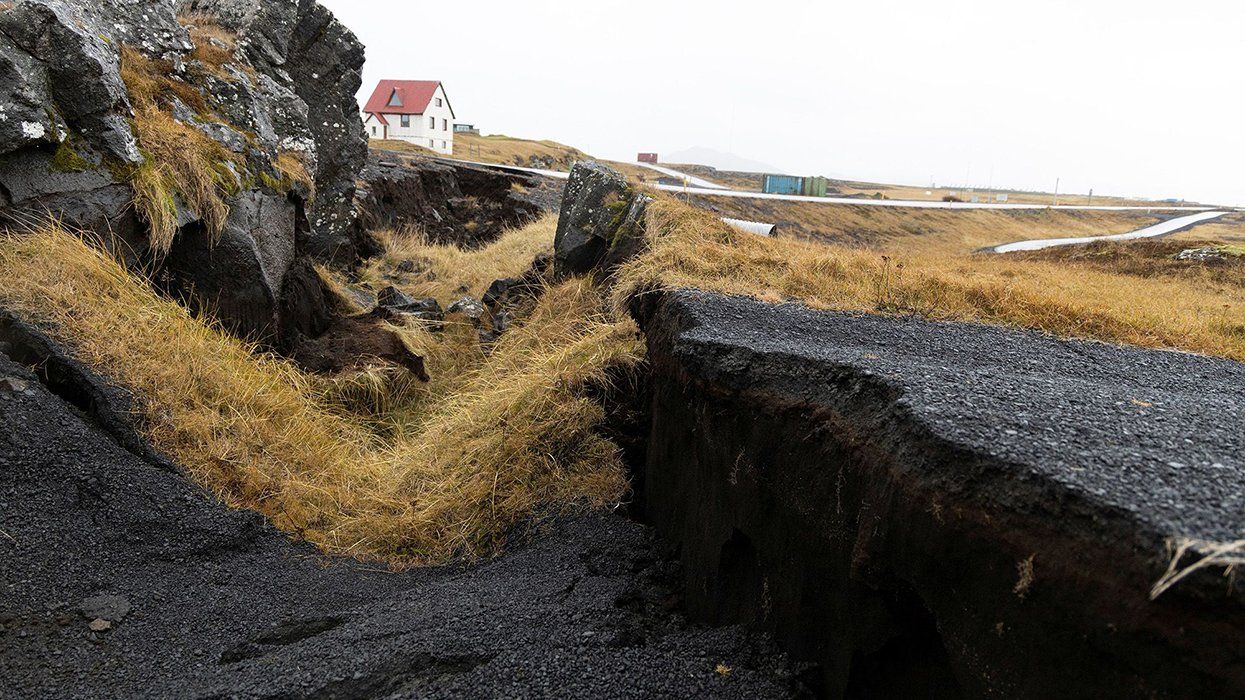All Rights reserved
By continuing to use our site, you agree to our Privacy Policy and Terms of Use.
By Issy Ronald, CNN
(CNN) – Iceland has declared a state of emergency and more than 3,000 residents have been urged to evacuate the small, coastal town of Grindavík as the country’s authorities anticipate the imminent eruption of a volcano in its southwestern peninsula.
Scientists monitoring the situation, including those at Iceland’s Met Office, observed changes to the situation on Sunday that could indicate “magma is moving closer to the surface,” and concluded on Monday that “the greatest area of magma upwelling” is in an area 3.5 kilometers (two miles) northeast of Grindavík.
So, what do we know about this potential eruption, what are its risks, how could it affect travel and why is Iceland, an island of just 103,000 square kilometers (40,000 square miles), home to so much seismic activity?
What happens if the volcano erupts?
Iceland is facing events that its 360,000 residents “have not experienced before, at least not since the eruption in Vestmannaeyjar,” the country’s Civil Protection Agency said on Friday, referencing a 1973 eruption that began without warning and destroyed 400 homes.
A 15-kilometer- (nine-mile-) long magma corridor now stretches from just northwest of Grindavík into the Atlantic Ocean, according to the Civil Protection Agency, which used models built from data collected in the area on Saturday.
Magma is a mixture of molten and semi-molten rock beneath the surface of the Earth that can cause an eruption when it finds its way to the surface, becoming lava.
If the magma erupts beneath the sea, it will be more explosive than if it erupts on land, experts say, though an eruption on land would be a greater threat to Grindavík itself.
“It could become explosive if the magma interacts with sea water,” Michele Paulatto, a research fellow at Imperial College London, said in a statement.
“If it erupts undersea, it could cause a Surtseyan eruption similar to the one that happened in 1963, also in Iceland, and created the island of Surtsey. That particular eruption lasted several years, so this is a possibility,” he added.
Bill McGuire, Professor Emeritus of Geophysical & Climate Hazards at University College London, said in a statement that there “is no reason, currently, to think that this eruption will be especially big,” though he noted that “it is notoriously hard to forecast how big an eruption will be.”
“The evacuated town of Grindavík is very close to the position of the new fracture, and its survival is far from assured,” he added. “Everything depends upon where magma eventually reaches the surface, but the situation doesn’t look good for the residents of the town.”
There is still a possibility that the magma will not come to the surface at all. As Dave McGarvie, a volcanologist at the University of Lancaster in the UK, pointed out in a statement, “not all dikes breach the surface to form eruptions … perhaps only one in every three or four.”
He added: “The best-case scenario is that this happens to the 15-km-long dike that has just formed, and that it simply cools and solidifies – and does not erupt.”
However, some effects of the seismic activity are already apparent. Roads have been damaged as a result of earthquakes in the area, with the Icelandic road administration sharing photos on social media of crumbling tarmac, broken sidewalks and gaping cracks in the road.
After scientists said they couldn’t rule out the magma tunnel reaching Grindavík, the Civil Protection Agency evacuated the town on Friday night, though some residents were allowed back to one area on Sunday under police escort to retrieve pets and essential items.
The famous Blue Lagoon, a geothermal spa about seven kilometers (four miles) north of Grindavík that draws tourists to its steaming water, closed on Thursday as a precaution.
“Toxic fumes are a real concern, the main being sulfur dioxide which can be corrosive and cause breathing problems,” Paulatto added. “It’s not something we need to worry about in the UK, but the local population and tourists can be affected depending on the prevailing wind direction.”
Is Reykjavík safe from the volcano?
Grindavík is about 70 kilometers (43 miles) southwest of Iceland’s capital city, Reykjavík. Authorities have not issued an evacuation order for Reykjavik, suggesting they believe it wouldn’t be affected by an eruption.
However, Iceland’s only international airport, Keflavík, is less than 20 miles from Grindavík.
Will it cause travel disruption?
Experts don’t expect a volcanic eruption to cause the same level of chaos as that seen in 2010 when the Eyjafjallajökull volcano erupted, since it is unlikely to involve the glacial ice that led to a huge ash cloud.
About 100,000 flights were canceled, affecting 2 million people, as a result of the ash spewed out by the 2010 eruption, which threatened to stall aircraft engines and cause electrical failure.
“Eyjafjallajökull involved an eruption through or next to glacial ice that melted and provided water that made the eruption more explosive than it would otherwise have been, hence the high eruption plume and very wide ash dispersal,” Lionel Wilson, Emeritus Professor of Earth & Planetary Sciences at Lancaster University, said in a statement.
“This should not happen…so they will just be dealing with weakly explosive lava fountains feeding lava flows.”
What about previous eruptions in 2014 and 2021?
Iceland is accustomed to volcanic eruptions, though they often occur in the wilderness, away from populated areas. The Bárðarbunga volcanic system situated in the center of the country erupted in 2014, producing lava that covered 84 square kilometers (32 square miles) of highland that didn’t damage any communities.
The Fagradalsfjall volcanic system erupted in 2021 for the first time in more than 6,000 years. It also didn’t threaten populated areas and even became a tourist attraction as people flocked to witness a volcanic eruption.
Why are there so many volcanos in Iceland?
Iceland sits on a tectonic plate boundary that continually splits apart, pushing North America and Eurasia away from each other along the line of the Mid-Atlantic Ridge. A powerful mantle plume, an area that is hotter than the surrounding magma, sits below it, which melts and thins the Earth’s crust. These conditions have made Iceland home to 32 active volcanoes.
The-CNN-Wire
™ & © 2023 Cable News Network, Inc., a Warner Bros. Discovery Company. All rights reserved.












































































